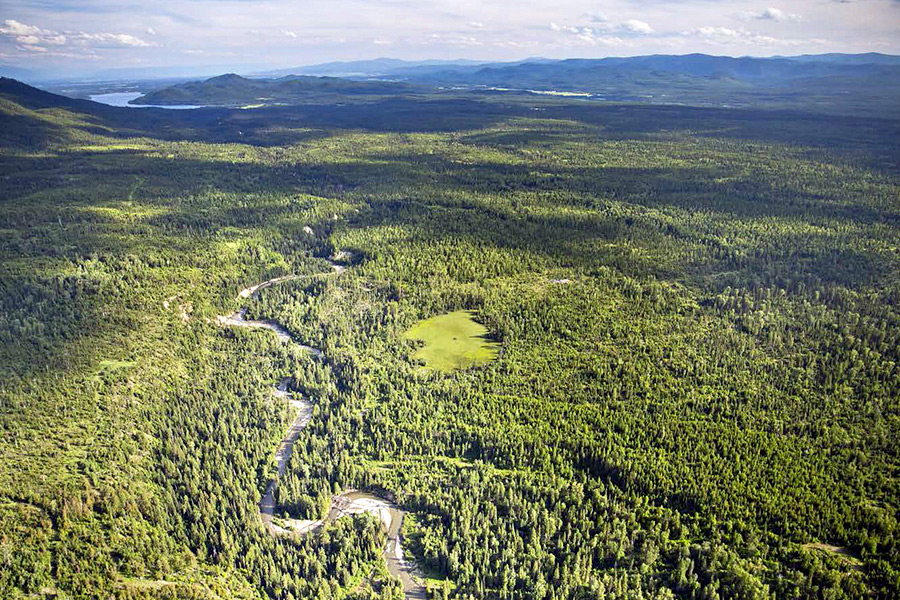With the rising role of recreation and associated economic development in the West, protecting the region’s clean water resources is becoming an increasing challenge for many growing communities.
In Whitefish, community leaders have struck a fine balance in an effort to offer clean drinking water while promoting recreation and healthy growth in its world-class watershed.
That balance is prominently showcased in a new report by Bozeman-based Headwaters Economics titled “Best Practices for Watersheds and Recreation,” which features Whitefish’s Haskill Basin as one of four case studies in how outdoor recreation and access can coexist with clean water.
Haskill Basin not only provides more than 90 percent of the city’s water supply, but it also stands out as a working forest, harvested by Stoltze Land and Lumber Company, the family-owned company that for more than a century has logged the land while allowing both public access and permitting the city to maintain its two water intakes.
Despite Stoltze’s good-neighbor policy, the city raised concerns in 2012 in the face of increased development pressure and the area’s rapid pace of growth.
Unbridled development could jeopardize water quality, pose deleterious effects on fish and wildlife habitat and rope off access to the region’s prized public lands, city leaders and land-management agencies reasoned.
To broker a deal and seek out a solution, the city, in concert with Montana Fish, Wildlife and Parks (FWP) and the nonprofit Trust for Public Land (TPL), reached out to Stoltze, which agreed to sell off some land for a conservation easement at a reduced price.
Meanwhile, the city, FWP and TPL raised money through grants and a voter-approved local-option sales tax increase, which passed handily with 84 percent of the vote in a 2015 ballot measure.
According to the report, the landslide victory underscores the community’s commitment to clean water and recreational lands.
The project not only prioritized management objectives and tools to maintain forest stewardship and habitat conservation, but also public recreation and access, including the dedication of a six-mile trail easement that helped connect the sprawling Whitefish Trail system.
“By investing in these types of projects, whether open space protection or managed recreation such as The Whitefish Trail, it’s how we can offer such a high quality of life, and why people are moving to Whitefish, setting up small businesses and employing people,” Whitefish Mayor John Muhlfeld states in the report. “It’s a positive feedback loop, and I can’t imagine that by investing in recreation and access to public lands in other communities you wouldn’t see the same response.”
Recreation can be a challenging topic for watershed managers, the report states, particularly due to the potential for impacts of sedimentation from the runoff of soil, fuel, pollutants, and construction.
But communities like Whitefish value outdoor recreation for its contributions to the local economy and quality of life, and have found solutions in which clean water and ample recreation can coexist, according to the report.
“Growing populations want to be able to recreate in the nearby mountains,” the report states. “Determining when, where and how recreation is compatible with protecting resource values varies from community to community.”
Because the project places side rails on forest management and the types of recreation and access, outlining what is and isn’t permissible helps ensure that the impacts of recreation and logging don’t adversely impact the city’s water supply or its fisheries, the report states.
Craig Workman, the city’s public works director, said formalizing public access in the Haskill project helped add security while also allowing for flexibility in how the lands are managed.
“The formalized agreement that states what types of recreation can and can’t occur puts me at ease. Clearly identifying where different types of activities can occur goes a long way toward protecting the watershed.”
In addition to Whitefish, the “Best Practices” report cites as case studies Bozeman’s Sourdough and Hyalite creeks; Tacoma, Washington’s Green River watershed; and Salt Lake City, Utah’s Jordan River watershed.
